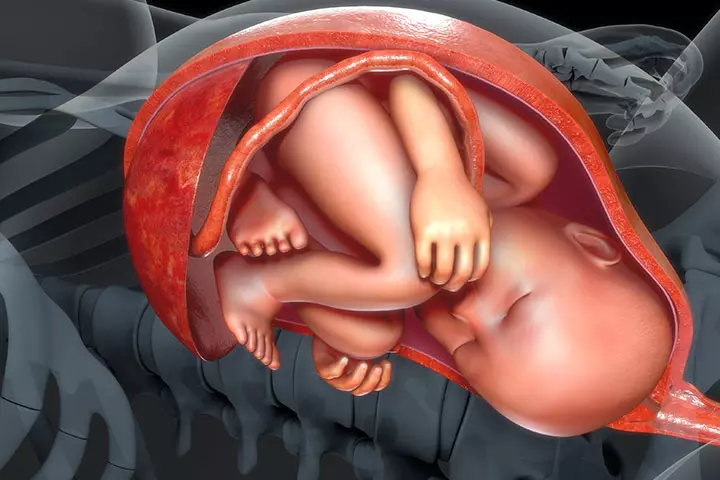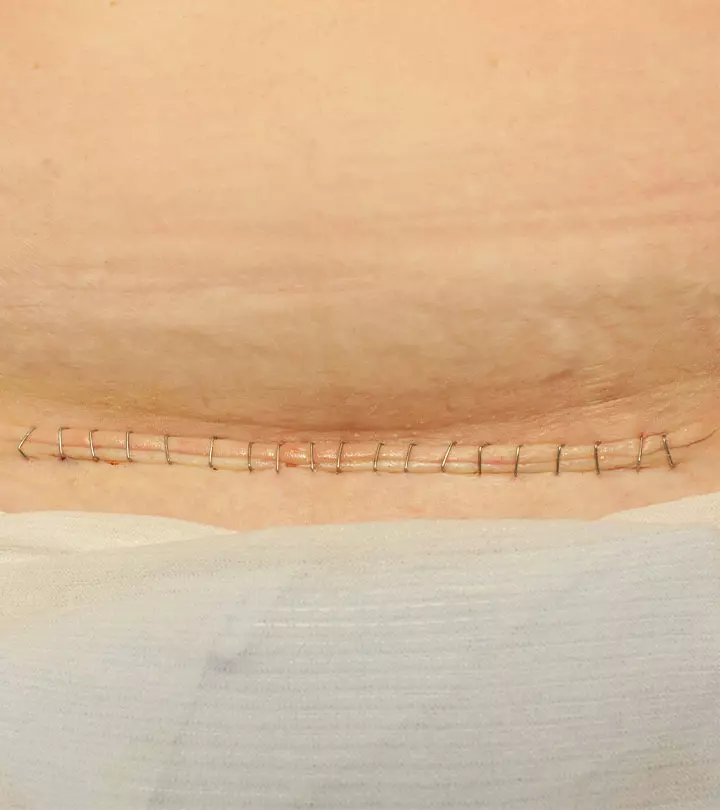

Image: Shutterstock
We have often heard about how the ‘water broke’ for a pregnant woman minutes before she went into labor and delivered the baby. Sometimes, this breaking of water itself is a sure-shot sign that she’ll go into active labor. But have you ever wondered what exactly happens when this occurs? If you are a mother, you’ll probably have some idea about it. And for those of you who don’t, here’s a little lowdown on what happens when the ‘water breaks’:

What Is Amniotic Sac?
Image: Shutterstock
Before we understand the mechanism of water break, it is important to know the function of the amniotic sac. The amniotic sac is a bag-like structure inside a woman’s uterus. It is made up of two membranes known as the chorion and the amnion. During pregnancy, this bag gets filled with a pale, slightly yellow, clear fluid called the amniotic fluid. This fluid collects within days after conception and continues to increase until the 38th week of the gestation. This sac of fluid is where your unborn baby floats around until the day of delivery. The fluid-filled amniotic sac protects your baby from any external jerks, injuries, or fatal bumps by acting as a cushion. It also maintains a consistent temperature for your baby inside the womb (1).
How Will You Know That Your Water Has Broken?
Image: Shutterstock
Expectant mothers who are in the last lap of pregnancy are generally told to keep a track of their urine output. Even more so if it happens to be quite close to the due date. One of the most common signs to watch out for is some amount of water trickling down from your vagina slowly. Especially if you don’t feel like peeing. Another common sign is when you go to pee and notice an unusually large amount of urine gushing out. Since amniotic fluid resembles urine in color, it is usually mistaken for urine. However, whenever this happens, head to the hospital immediately. This is because, in the absence of the amniotic fluid, which was so far cushioning and protecting your baby, your little one might be at high risk of infection or injury (2).
What Happens When The Water Breaks?
Image: Shutterstock
At the time of birth, the baby needs to pass through the birth canal. The birth canal itself is a very narrow space, but enough to accommodate your baby’s head. By this time, the amount of amniotic fluid would be around a quart. Once membranes of the amniotic sac break, the entire fluid flows out of the vagina. This is when you’ll probably go into labor. You are then required to start pushing your baby out. As the cervix starts opening, the amniotic sac is believed to protect your baby’s head from any injury from the open cervix. Often the amniotic sac ruptures on its own which is when it is called as ‘water break’. However, at times the labor room nursing professionals might rupture it if you have gone into labor and ready to deliver (3).
Here are a few points to remember if you experience your water breaking at home:
- Discuss the options of such a scenario beforehand with your doctor
- Keep your hospital bag ready with all the essentials much in advance so you can just grab it when you have to leave in a hurry
- Keep a big towel or a bed sheet – which you don’t wish to use again – at an arm’s length as you approach your due date. In case of a water break, you can lay it out on the car seat while heading out to the hospital
- Try to keep yourself calm and do not panic. If you start experiencing contractions immediately, practice deep breathing until you reach the hospital.
Now you know what exactly happens when your water breaks, right? We hope this new-found knowledge helps you be better prepared for your D-day. Just keep your doctor in the loop and everything is sure to go fine. Good look to all you soon-to-be mommies out there!
Community Experiences
Join the conversation and become a part of our nurturing community! Share your stories, experiences, and insights to connect with fellow parents.
















